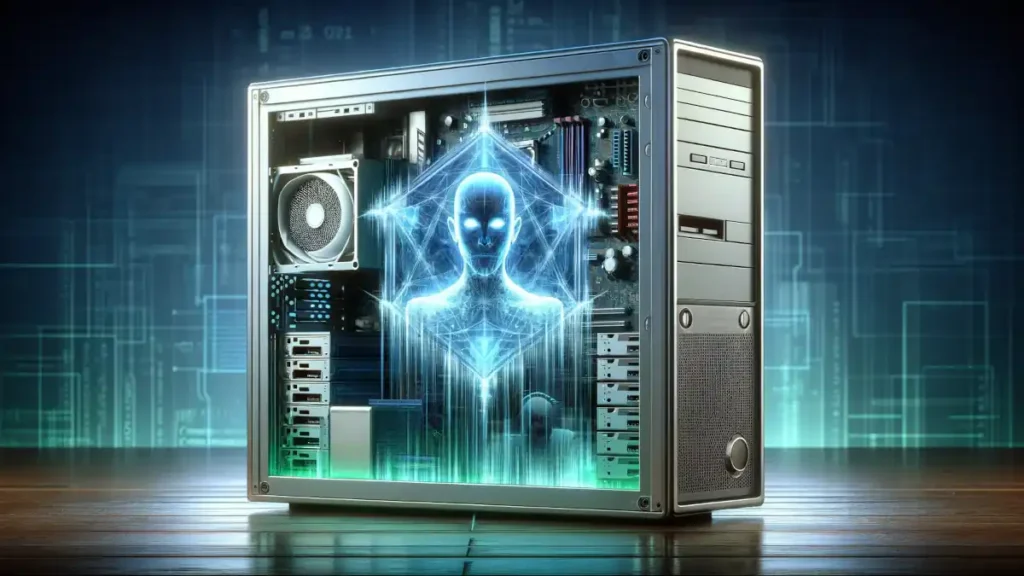In the realm of computer science, the concept of a “Background Program” is both fascinating and fundamental. These are the programs that run seamlessly in the background of your computer system, allowing you to multitask efficiently. While you engage in a task, like writing a letter, these programs perform various functions – from data analysis to system monitoring – without interrupting your primary activity.
This article delves into the world of background programs, exploring their mechanics, importance, and the subtle ways they enhance our computing experience. We aim to provide a comprehensive understanding of these unseen yet vital components of modern computing.
In this article:
- What is a Background Program?
- The Mechanics of Background Programs
- The Importance of Background Programs
- Managing Background Programs
- The Future of Background Programming
- References

1. What is a Background Program?
A background program is a type of software application that operates behind the scenes of a computer system. Unlike the applications we actively engage with, these programs run without direct user interaction, often starting up with the operating system and continuing to operate as long as the computer is on. The primary characteristic of a background program is its non-intrusiveness; it functions silently, executing tasks that are crucial for system performance and stability, such as system monitoring, updates, or network connectivity.
The key aspect of a background program is its ability to manage tasks without claiming the focus of the computer’s user interface. This ensures that the primary resources of the computer, like CPU and memory, are available for the user’s active tasks. The efficiency of a computer system heavily relies on the optimal functioning of these background programs, balancing resource usage to maintain system responsiveness and stability.
Examples in Everyday Computing
- Antivirus Software: This is a classic example of a background program. Antivirus software constantly runs in the background, scanning files for malware, updating its virus definitions, and performing routine system checks without requiring active user participation.
- Automatic Updates: Many applications, including the operating system itself, routinely check for and install updates. These updates run in the background, ensuring that the software remains up-to-date and secure without interrupting the user’s work.
- Cloud Sync Services: Programs like Dropbox or Google Drive sync files between your computer and cloud storage. This process happens in the background, seamlessly keeping your files updated across devices.
- System Monitoring Tools: Utilities that monitor system health, such as CPU temperature or battery status, are background programs. They continuously gather data and provide alerts or reports without user initiation.
2. The Mechanics of Background Programs
How They Operate
Background programs typically start automatically when a computer boots up, though some may be initiated by specific system events or user settings. These programs operate on a lower priority compared to foreground applications, meaning the system allocates resources to them only after the needs of active user applications are met. This ensures that the user’s immediate tasks are not slowed down by background activities.
These programs are designed to be lightweight and efficient, consuming minimal system resources. They often wait in a dormant state, becoming active only when needed — for example, an email client checking for new messages at set intervals, or a backup utility that activates during periods of low system usage.

The Difference Between Foreground and Background Processes
The primary difference between foreground and background processes lies in their interaction with the user and resource allocation. Foreground processes are those with which the user is actively interacting. These could be applications like a web browser, a word processor, or any software that requires direct user input. They have higher priority in terms of resource allocation, ensuring smooth and responsive performance for the user.
In contrast, background processes are those that the user does not actively engage with. They run without direct user interaction, performing tasks independently. While they are essential for various system functionalities, they have a lower priority in resource allocation. This distinction ensures that the system remains responsive to the user’s immediate needs while efficiently managing all necessary background tasks.
By understanding the operation and significance of background programs, users can appreciate the complexity and sophistication of modern computing systems. These silent yet essential components play a critical role in the overall performance and user experience of a computer.
3. The Importance of Background Programs
Their Role in System Performance
Background programs are pivotal in maintaining and enhancing the overall performance of a computer system. They perform essential tasks like system monitoring, automatic updates, and resource management, often without the user’s awareness. The efficiency and stability of a system are largely attributed to these programs, which work continuously to ensure that everything functions as intended.
One of the critical roles of background programs is in managing system resources. They optimize the use of the CPU, memory, and disk space, allocating these resources where they are most needed. For instance, memory management programs run in the background to free up RAM used by inactive applications, thereby speeding up the active ones.
Another key aspect is the maintenance of system security and software updates. Background programs like antivirus software and update managers work silently to protect the system from external threats and keep software up to date, patching vulnerabilities and enhancing features without disrupting the user.
Real-world Implications for Multitasking
In a real-world scenario, the ability to multitask efficiently on a computer is largely enabled by background programs. These programs allow users to switch between different applications and tasks seamlessly. For example, while a user is engaged in writing a report, a background email client can receive new messages, and a backup utility can save the document to the cloud, all without interrupting the user’s workflow.
Background programs also play a vital role in optimizing the performance of multitasking environments. They ensure that system resources are judiciously allocated, preventing any single application from monopolizing the system. This leads to a smoother, more responsive computing experience, essential in professional and personal settings where multitasking is a routine.
4. Managing Background Programs
Tools and Techniques for Monitoring
Effective management of background programs is essential to maintain optimal system performance. Various tools and techniques are available for monitoring and controlling these programs:
- Task Manager (Windows) / Activity Monitor (macOS): These built-in tools provide a comprehensive overview of all running processes, including background programs. They display resource usage such as CPU, memory, and network, allowing users to identify and manage programs that are consuming excessive resources.
- System Configuration Utilities: Tools like ‘msconfig‘ on Windows enable users to control which programs start automatically at boot. This can help in reducing the load on system resources by preventing unnecessary programs from running in the background.
- Resource Monitor: Advanced utilities like Windows Resource Monitor or Linux’s top command provide deeper insights into how resources are being utilized by different processes, offering more control over background program management.
Balancing System Resources
Balancing system resources involves ensuring that background programs do not negatively impact the performance of foreground applications. Here are some strategies:
- Setting Priorities: Some operating systems allow users to set priorities for processes. By assigning lower priority to less critical background tasks, users can ensure that more resources are available for foreground applications.
- Scheduled Tasks: Certain background tasks, such as system scans or backups, can be scheduled to run during times of low system usage, such as during the night or when the computer is idle.
- Limiting Startup Programs: Reducing the number of programs that automatically start when the computer boots up can significantly improve system boot time and overall performance.
By effectively managing background programs, users can strike a balance between having essential services running and maintaining an efficient, high-performing system. This management is crucial, particularly in environments where resource-intensive applications are used, ensuring that the system remains stable and responsive under various workloads.
5. The Future of Background Programming
Emerging Trends and Technologies
The landscape of background programming is continuously evolving with the advent of new technologies and trends. One significant trend is the integration of artificial intelligence and machine learning into background processes. AI algorithms are increasingly being used to optimize system performance, predict resource requirements, and automate routine tasks, enhancing both efficiency and user experience.
Another emerging trend is the rise of edge computing, where background processing is increasingly being handled at the edge of the network, closer to where data is generated. This reduces latency and improves response times, particularly crucial for Internet of Things (IoT) devices and real-time applications.
Cloud computing continues to influence background programming significantly. More background tasks, such as data backups and system updates, are being handled in the cloud, offering scalability and reducing the load on individual systems.
The Evolving Landscape of Multitasking in Computing
The future of multitasking in computing is closely tied to advancements in background programming. As systems become more powerful and capable of handling numerous tasks simultaneously, the efficiency of background programs becomes even more essential. The development of lightweight, efficient background processes is critical to support advanced multitasking capabilities without compromising system performance.
Virtualization and containerization are also reshaping multitasking. These technologies allow multiple virtual environments to run on a single physical machine, each with its own set of background processes. This leads to more efficient resource utilization and improved isolation between different tasks.
6. References
- Books:
- “Operating Systems: Principles and Practice” by Thomas Anderson and Michael Dahlin
- “Modern Operating Systems” by Andrew S. Tanenbaum
- Academic Papers:
- “A Survey of Background Task Offloading to Improve App Responsiveness” – ACM Digital Library
- “An Efficient Memory Management for Mobile Operating Systems Based on Prediction of Relaunch Distance” – TechScience Press
- RFCs: